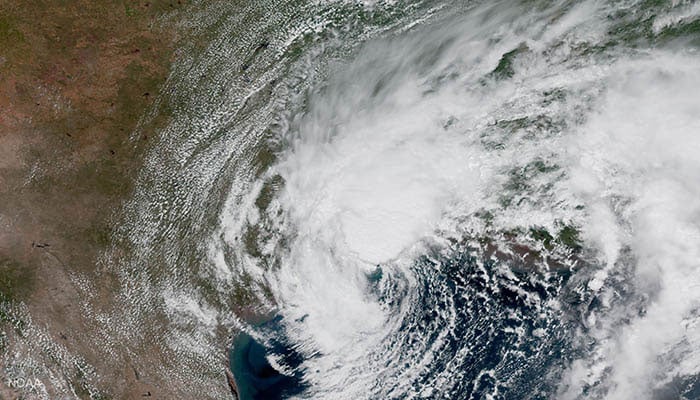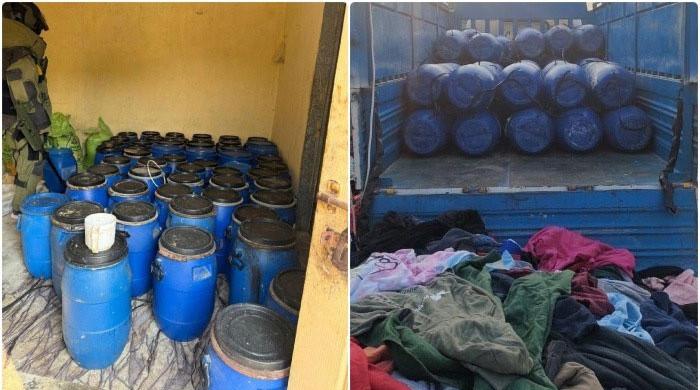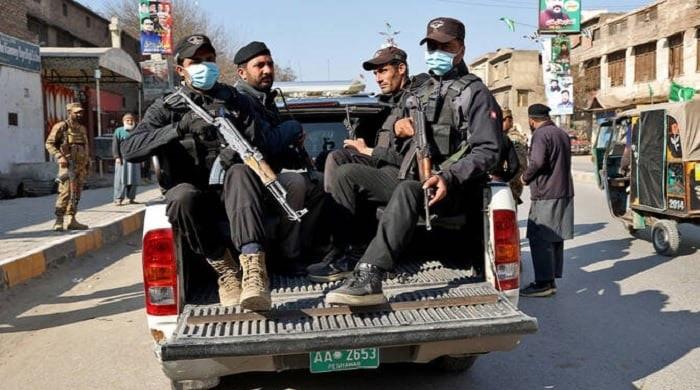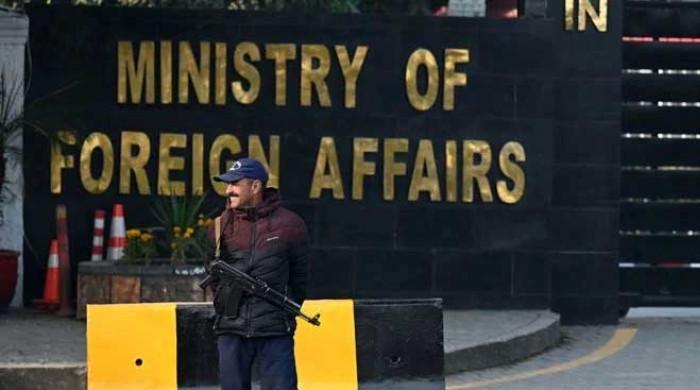Pakistan proposes 13 names for tropical cyclones in Bay of Bengal, Arabian Sea
Names include Gulab, Asna, Sahab and Afshan, among several others easy to pronounce
May 04, 2020

ISLAMABAD: The Pakistan Meteorological Department (PMD) has proposed 13 names — including Gulab, Asna, Sahab and Afshan — to New Delhi’s Regional Specialised Meteorological Centre so they are used to name the tropical cyclones to be formed in the Bay of Bengal and the Arabian Sea, officials told The News.
“As a member of WMO/ESCAP [World Meteorological Organisation/United Nations’ Economic and Social Commission for Asia and the Pacific] Panel on Tropical Cyclones, Pakistan has proposed 13 names for the tropical cyclones that will form in the Bay of Bengal and the Arabian Sea in the coming years,” said an official of the PMD.
“Twelve other member countries on the panel have also proposed 13 names each, which will be used alphabetically for naming the tropical cyclones forming over the North Arabian Sea," the official said. Amphan will be the name of the tropical cyclone to be formed in the Bay of Bengal or the Arabian Sea before the coming monsoon season, said officials.
“Since all the names of tropical cyclones on the previous list will end after Amphan, the panel members, which are now 13 in number, have suggested 13 more names each, which will be used to name the tropical cyclones in alphabetical order,” said the PMD official, adding that every country has suggested names in accordance with their cultural, historical and regional considerations.
Also read: Karachi, other coastal areas under no threat from cyclone in Arabian Sea: Met Office
The names suggested by Pakistan
Gulab, Asna, Sahab, Afshan, Manahil, Shujana, Parwaz, Zannata, Sarsar, Badban, Sarrab, Gulnar and Waseq are the names proposed by Pakistan. The PMD official recalled that prior to 2004, tropical cyclones forming in the North Indian Ocean, including the Bay of Bengal and the Indian Ocean, used to be given numbers, but they were very confusing.
“In 2004, meteorological department heads of eight countries in the region sat together and decided to name the tropical cyclones, and in this regard, they came up with a list of 64 names. Each country contributed eight names, and they are being used in alphabetical order,” said the official.
“Actually, the WMO/ESCAP Panel on Tropical Cyclones agreed in principle during its 27th session in Muscat (Oman) to assign names to the tropical cyclones in the Bay of Bengal and the Arabian Sea. After long deliberations among the member countries, the naming of the tropical cyclones over the North Indian Ocean commenced in September 2004.”
The official said that it was realised recently that tropical cyclones forming in the Bay of Bengal or the Arabian Sea were also affecting countries in the Middle East besides the eight countries on the WMO/ESCAP Panel. Therefore, added the official, five more countries have been included in the panel, and they also have suggested 13 names each that will be used to name the tropical cyclones in the Arabian Sea.
Also read; More than 50mn IDPs face greater risk amid pandemic: monitor
Vast majority unaware of how cyclones are named
“Iran, Saudi Arabia, the United Arab Emirates [UAE], Yemen and Qatar have also been included in the panel this year, as the tropical cyclones forming in the Arabian Sea are now causing damage to the shores of Yemen, Qatar and Iran, while Saudi Arabia and the UAE are also getting affected due to the cyclones.”
Sardar Sarfaraz, chief meteorological officer of the PMD in Karachi, recalled that the first name given to any tropical cyclone in the North Indian Ocean was Onil, which was proposed by the meteorological department of Bangladesh.
For the past 16 years, tropical cyclones forming in the North Indian Ocean, including the Bay of Bengal and the Arabian Sea, have been given different names, of which some are very familiar to the people in Pakistan and India, while many are strange, but a vast majority of the people are unaware as to how tropical cyclones are named and who is behind the practice.
Kyarr was the name of the super cyclonic storm in the Arabian Sea that was being discussed in October 2019 in the coastal communities of Pakistan, India and Middle Eastern countries, including Yemen and Oman, but very few people in these countries knew that Kyarr meant “tiger” in the Burmese language, and the name was given by Myanmar’s meteorological department.
'Countries agree names should be short, easy to pronounce'
The next cyclone that formed in the Arabian Sea was called Maha, a name decided by Oman’s Met Office, and the tropical cyclone that formed after Maha was known as Bulbul, a name given by Pakistan.
Dr Qamar-uz-Zaman, former director general of the PMD, had earlier pointed out that the list agreed upon in 2004 would be running out of names shortly, because after Maha and Bulbul, it would be Sri Lanka’s turn, which had come up with the name Pawan, while the last name on the list of tropical cyclones was Amphan, a name chosen by Thailand.
Dr Zaman had said that the regional countries had agreed to suggest names that were short, easy to pronounce and not frightening to the people. The first tropical cyclone named by Pakistan was Fanoos, followed by Nargis, Laila and Nilam, said Dr Zaman, adding that three more cyclones were named by Pakistan: Nilofar, Vardah and Titli.
“Bulbul is the last name on the list by Pakistan and it would be given to a tropical cyclone that would form after cyclone Maha either in the Bay of Bengal or the Arabian Sea,” he said. The Regional Specialised Meteorological Centre is authorised to give names to the tropical cyclones according to the list agreed upon by the member countries.
Originally published in The News









